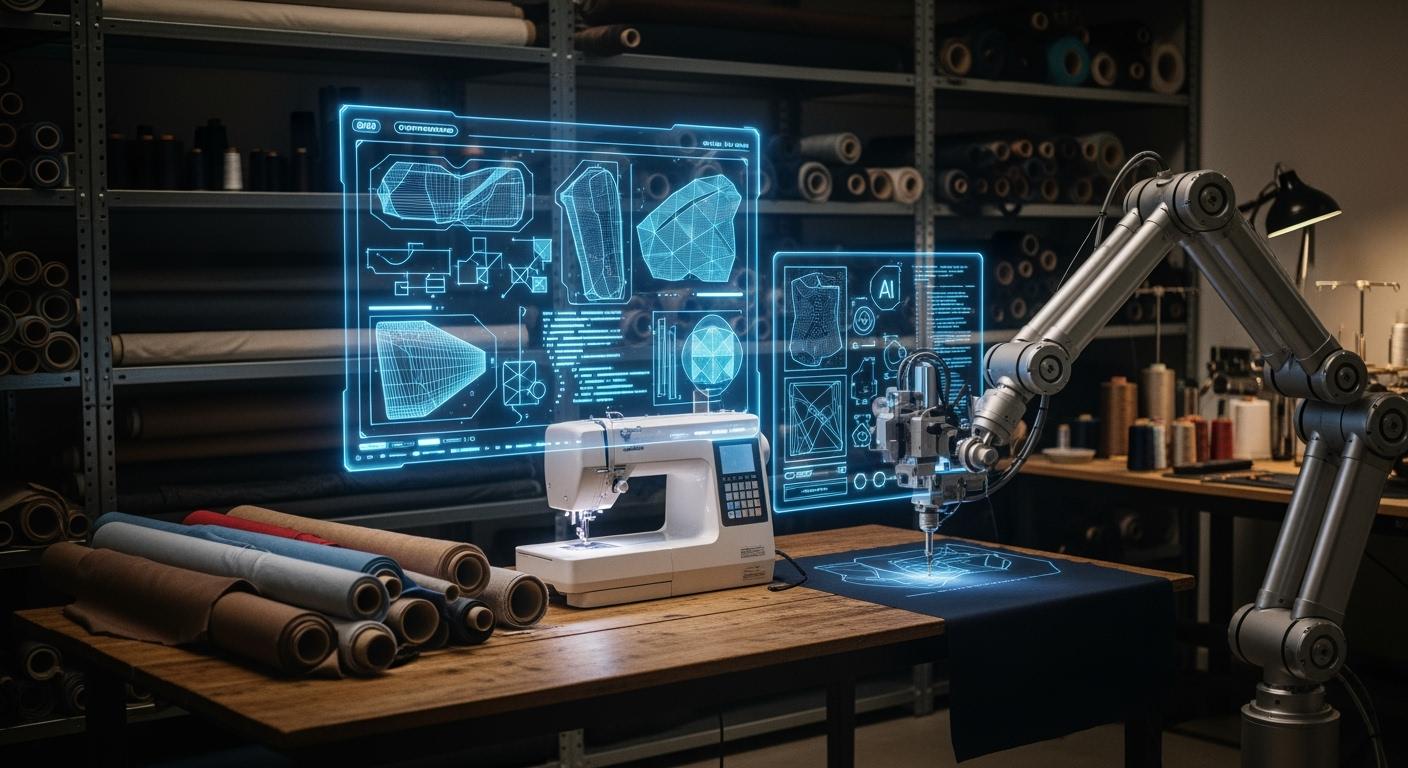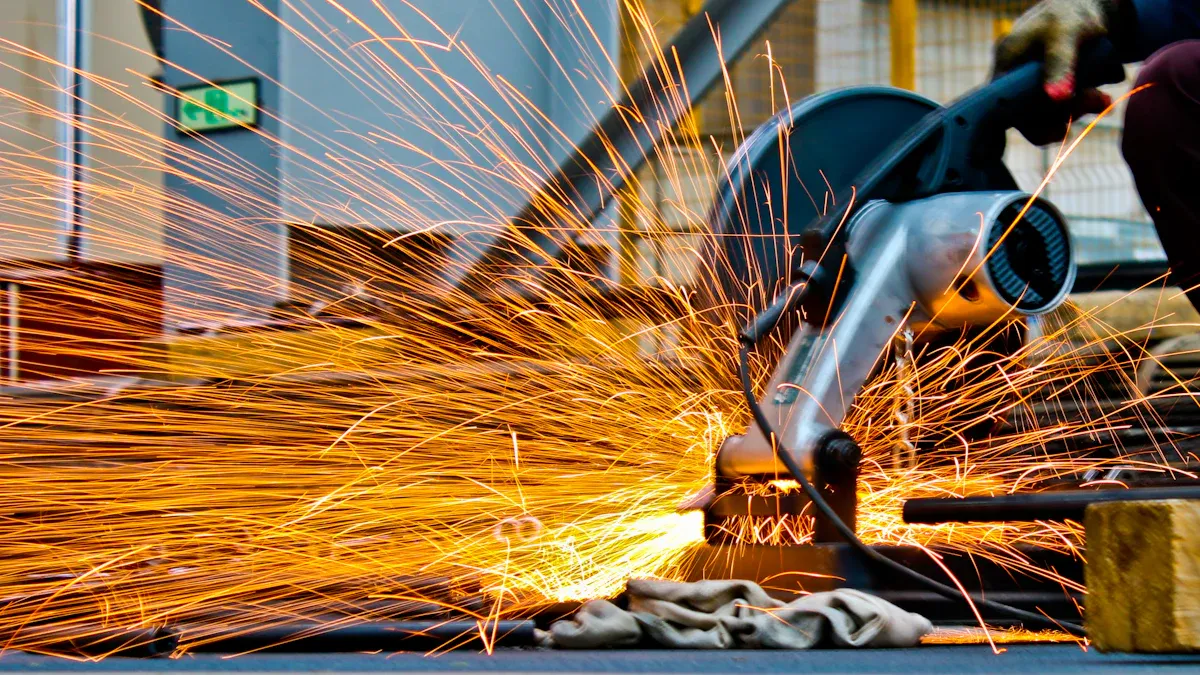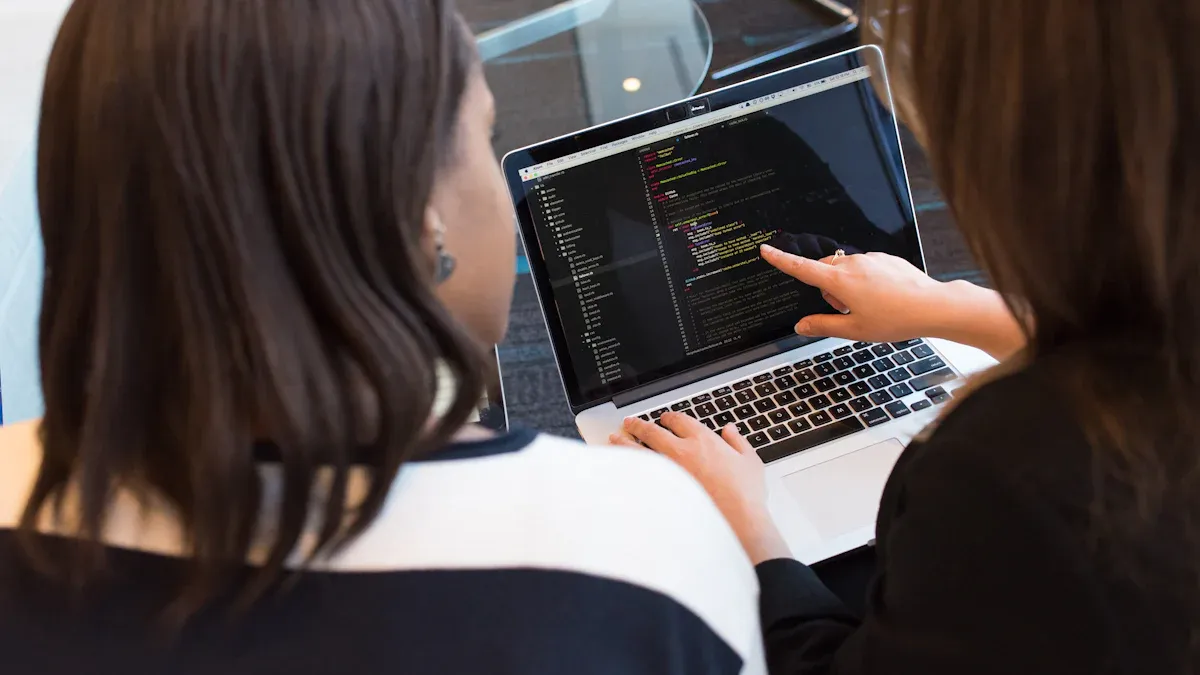
Manufacturing creates immense fabric waste, a costly issue from the complex "nesting problem." This waste is a major factor in the 92 million tons of textile waste generated annually. Artificial intelligence offers the definitive solution. AI-powered fabric-cutting systems use AI to analyze countless cutting patterns. These AI systems find the most efficient layout for fabric patterns. Advanced AI algorithms, including Genetic Algorithms and other algorithms like Simulated Annealing, iteratively perfect these cutting patterns. The AI behind AI-powered fabric-cutting optimizes the cutting process. AI ensures minimal fabric waste. AI makes every cutting action precise, transforming fabric cutting and reducing waste. AI is key to better fabric cutting. AI improves cutting patterns. AI stops fabric waste. AI changes cutting.
How Core AI Algorithms Cut Waste

Specialized AI algorithms are the engine behind modern, efficient fabric cutting. These systems do not just follow a single plan. Instead, they explore thousands of possibilities to find the best one. The AI iteratively tests and refines layouts to create a compact arrangement. This process dramatically reduces fabric waste. Three core machine learning algorithms power this revolution in AI-powered fabric-cutting.
Genetic Algorithms: Evolving Layouts
Genetic algorithms mimic the process of natural selection. The process starts with a population of different cutting patterns. The AI evaluates each one.
How It Works: Survival of the Fittest Layout
- Generation: The AI creates an initial set of random layouts for the fabric patterns.
- Evaluation: It scores each layout based on how much fabric it uses. Lower waste equals a higher score.
- Selection: The best layouts ("parents") are selected to create the next generation.
- Reproduction: The AI combines features from the best layouts to create new "offspring" layouts. It also introduces small, random mutations.
- Repeat: This cycle repeats hundreds or thousands of times. Each generation evolves to produce less waste.
This machine learning approach ensures the final cutting plan is highly optimized. The algorithm effectively "evolves" the most efficient way to arrange patterns on the fabric, minimizing empty space and stopping fabric waste. This is a core function of AI-powered fabric-cutting.
Simulated Annealing: A Cooling Approach
Simulated Annealing is another powerful optimization method. This algorithm gets its name from the process of annealing in metallurgy. A blacksmith heats and slowly cools metal to strengthen it. The AI uses a similar concept for finding optimal cutting patterns.
The algorithm begins with a random layout and a high "temperature." It makes a small change to the layout. At a high temperature, the AI might accept a change even if it temporarily increases waste. This freedom allows the machine learning model to explore a wider range of solutions and avoid getting stuck on a decent, but not perfect, layout. As the system "cools," the AI becomes stricter. It begins to only accept changes that reduce fabric waste. This slow cooling process guides the layout toward a near-perfect state, ensuring an extremely efficient use of fabric. This method is crucial for effective AI-powered fabric-cutting. The precise cutting it enables prevents unnecessary waste.
Neural Networks: Predicting Patterns
Neural networks are a type of machine learning modeled after the human brain. They excel at learning from data. In AI-powered fabric-cutting, a neural network analyzes thousands of past cutting jobs. It learns the relationships between different shapes, fabric types, and successful cutting patterns.
This AI model can then predict a highly efficient starting layout for a new set of patterns. This prediction gives other algorithms, like Genetic Algorithms, a significant head start. The AI doesn't have to start from a completely random position.
| Input Data | Neural Network Analysis | Output |
|---|---|---|
| Pattern Shapes | Learns optimal adjacencies | A smart initial layout |
| Fabric Width | Identifies placement constraints | Reduced processing time |
| Past Layouts | Recognizes successful strategies | Minimized fabric waste |
By leveraging historical data, these AI algorithms make the entire cutting optimization process faster and more effective. The machine learning model improves with every cutting job it analyzes. This continuous learning is a key advantage of AI-powered fabric-cutting, leading to better cutting and less waste over time.
The Impact of AI on Fabric Waste
Adopting AI algorithms creates a transformative impact on manufacturing operations. The technology moves beyond theory to deliver measurable results. AI-powered fabric-cutting directly addresses the core challenges of waste, speed, and quality control. This shift improves a company's bottom line and its environmental footprint. The efficiency gains redefine what is possible in modern production.
Drastic Material and Cost Savings
The most significant benefit of AI is the dramatic reduction in fabric waste. Traditional cutting methods often result in 15-20% material waste. AI-powered fabric-cutting slashes this figure to as low as 1-3%. Some advanced machine learning implementations have even achieved an incredible 82% reduction in fabric waste. This level of material savings generates substantial financial returns.
These percentage savings translate into major cost savings for businesses of all sizes. The impact on large-scale operations is immense.
- A global vehicle manufacturer, for example, saved over $400 million in 30 months through design-driven cost reduction programs.
- Another manufacturer saw 20 percent savings in three years from similar initiatives.
- For a company with $40 billion in raw material expenses, a 3% annual reduction from AI could mean $1.2 billion in yearly savings.
These cost savings empower businesses to reinvest in growth, lower prices, or improve profitability. The efficiency of AI in cutting fabric directly boosts financial health and promotes greater sustainability. The savings from reduced fabric waste are undeniable.
Increased Production Speed
AI not only delivers material savings but also accelerates the entire production timeline. Automated nesting software completes complex layouts in minutes. A human operator could take hours to perform the same task. This speed allows manufacturers to increase throughput without adding more equipment or staff. One job shop using dynamic nesting software reported a 25% reduction in lead times. The AI optimizes the cutting path for maximum efficiency.
The time savings become clear when looking at specific jobs. AI makes the cutting process faster and more streamlined.
| Task | Traditional Time | Time with AI | Improvement |
|---|---|---|---|
| Cutting Aluminum Parts | 4 hours 12 mins | < 2 hours 40 mins | Over 35% faster |
| Laser Idle Time | Varies | Varies | 18–22% reduction |
| Job Completion | Varies | Varies | Up to 40% faster |
This enhanced cutting efficiency means more jobs completed per day. The AI handles the complex planning, freeing up human workers for other valuable tasks. Faster cutting cycles lead to quicker order fulfillment and improved customer satisfaction. The AI drives operational efficiency and productivity.
Real-Time Cutting Adjustments
Static cutting plans cannot adapt to unexpected issues. A flaw in the fabric or a slight variation in material width can ruin an entire batch. AI-powered fabric-cutting overcomes this limitation with real-time adjustments. The AI uses cameras and sensors to scan the fabric as it feeds into the cutter.
Smart Adaptations on the Fly 💡 If the AI detects a defect, it instantly re-nests the patterns to cut around the flawed area. This dynamic capability ensures that every piece of fabric is usable. The system maximizes yield and maintains quality without stopping production. This precision cutting prevents waste from material imperfections.
This adaptability is a key advantage of AI over manual or pre-programmed cutting. The AI makes intelligent decisions during the cutting process itself. It guarantees optimal use of the fabric, reduces waste from errors, and ensures the final patterns are perfect. This intelligent process enhances both savings and sustainability. The precision cutting from AI is a game-changer for quality control.
Implementing AI-Powered Fabric-Cutting

Bringing AI into a production environment is a strategic decision. Companies can choose from several pathways to adopt AI-powered fabric-cutting. The right choice depends on existing infrastructure and business goals. Each option offers a powerful way to reduce fabric waste and improve efficiency. The goal is to find the best AI solution for your cutting needs.
Integrated Software Solutions
Many businesses opt for integrated software solutions. These are all-in-one CAD/CAM packages that include AI nesting modules. Leading providers offer sophisticated tools for AI-powered fabric-cutting. This software simplifies the adoption of AI technology. The AI handles the complex task of optimizing each cutting job.
| Software Solution | Key AI Feature | Impact on Fabric Waste |
|---|---|---|
| Gerber Technology | AI-powered nesting | Reduces fabric waste significantly |
| Lectra | AI-driven pattern grading | Creates waste-reducing nests |
| Optitex | AI-driven fit analysis | Improves pattern efficiency |
These platforms provide a direct path to better fabric cutting. The AI within these systems is designed to minimize waste from the start. This makes AI-powered fabric-cutting accessible.
Flexible API-Based Services
An alternative approach uses Application Programming Interfaces (APIs). An API allows a specialized AI-powered fabric-cutting service to connect with a company's existing software, like an ERP or PLM system. This method offers incredible flexibility. A modern, API-first architecture enables seamless communication between different tools. This integration is a core capability, not an afterthought. It allows a business to inject AI logic directly into its unique workflow. This enhances the overall efficiency of the cutting process. The AI works with current systems to optimize every piece of fabric.
Key Adoption Considerations
Adopting AI-powered fabric-cutting requires careful planning. Several key factors influence a successful implementation.
Checklist for Adoption ✅
- Hardware Integration: The AI software must be compatible with existing cutting machines.
- Software Costs: Pricing models vary widely. Some options involve a one-time perpetual license, while others use a recurring subscription fee. Costs can range from a few thousand dollars to over $10,000 annually for enterprise packages.
- Staff Training: Employees need training to effectively use the new AI tools and maximize efficiency.
Proper planning ensures a smooth transition to AI-powered fabric-cutting. This technology is a powerful investment against fabric waste. The AI optimizes every cutting pattern, delivering consistent results and stopping unnecessary waste. The precision of AI-powered fabric-cutting transforms the entire production line.
AI algorithms are the definitive solution to fabric waste. These advanced algorithms optimize every fabric cutting job, delivering major savings and efficiency. AI-powered fabric-cutting reduces waste and boosts sustainability. The AI ensures precise cutting for maximum fabric savings. This AI cutting process stops fabric waste. AI-powered fabric-cutting provides savings and better sustainability. Businesses should adopt AI-powered fabric-cutting. This AI improves operational efficiency and sustainability, shrinking the environmental footprint. AI-powered fabric-cutting prepares companies for future AI innovations in fabric cutting, ensuring long-term savings and efficiency from less waste. AI cutting provides savings. AI cutting offers savings. AI cutting delivers savings. AI cutting provides savings.
FAQ
How much does AI cutting software cost?
The cost varies. Some AI software has a one-time fee. Other AI systems use a subscription model. The price depends on the features needed for your fabric cutting operation. The AI optimizes each fabric cutting job.
Is AI difficult to integrate with my current cutting machines?
Most AI software integrates easily with modern cutting hardware. The AI sends optimized cutting plans directly to the machine. This seamless process improves fabric cutting efficiency. The AI enhances the entire fabric cutting workflow.
How does AI handle different types of fabric?
The AI analyzes fabric properties like stretch and width. It adjusts the cutting strategy for each specific fabric. This intelligent AI ensures precise cutting and minimal fabric waste. The AI makes fabric cutting smarter.
Will my team need extensive training for this AI?
Modern AI interfaces are user-friendly. Basic training helps staff understand the new fabric cutting workflow. The AI automates the complex parts of fabric cutting. This simplifies the operator's job for every cutting task.
See Also
Revolutionary AI in Fashion: Sustainable Solutions for a Greener Earth
Intelligent AI Optimizes Fashion Returns, Enhancing Customer Satisfaction Today
Forecasting Textile Needs: AI-Driven Predictive Maintenance by 2025
AI's Role in Managing Rapid Viral Trends Within Fast Fashion
Optimized AI Routing Algorithms Significantly Reduce Fashion Delivery Times by 22%